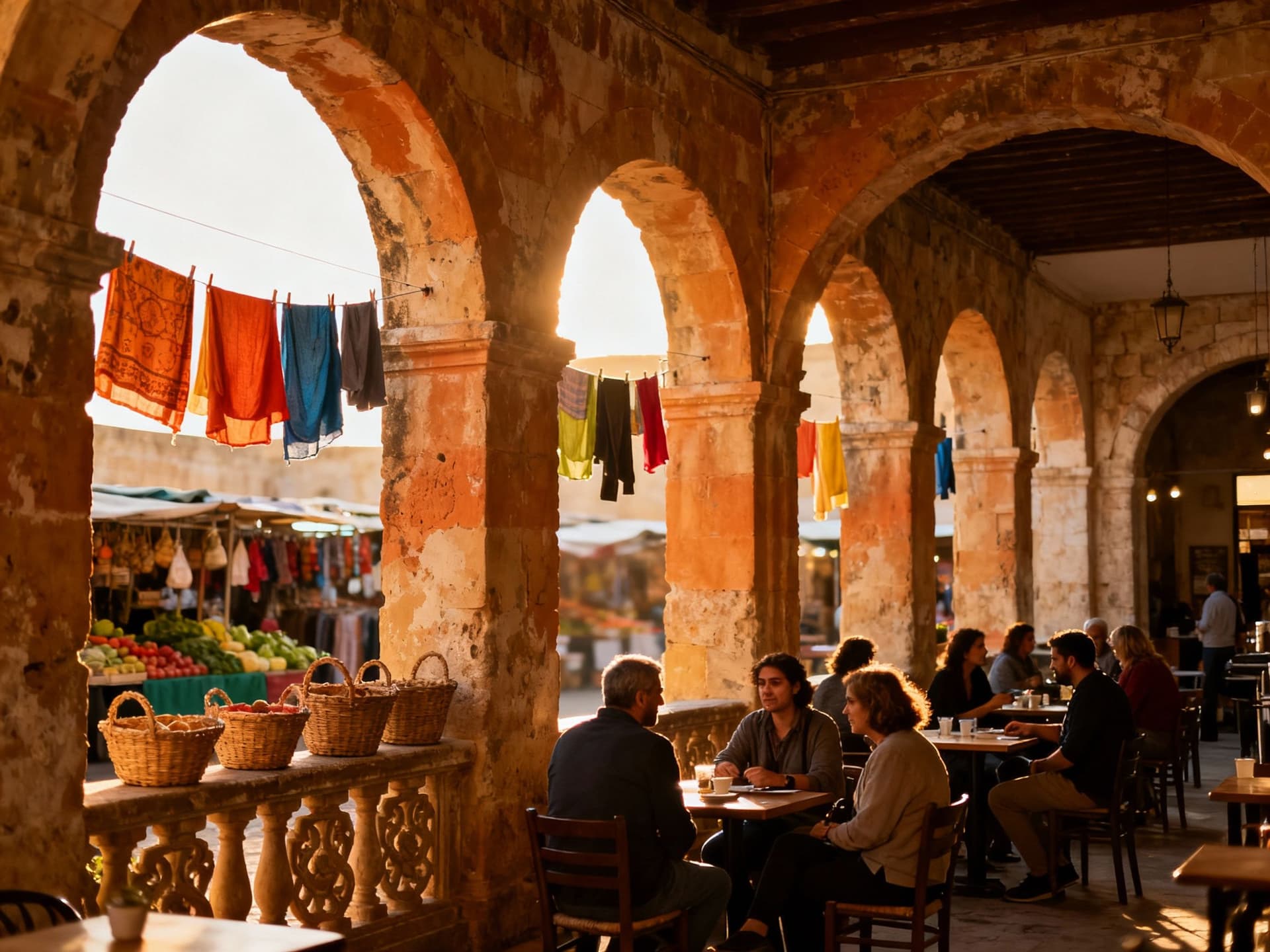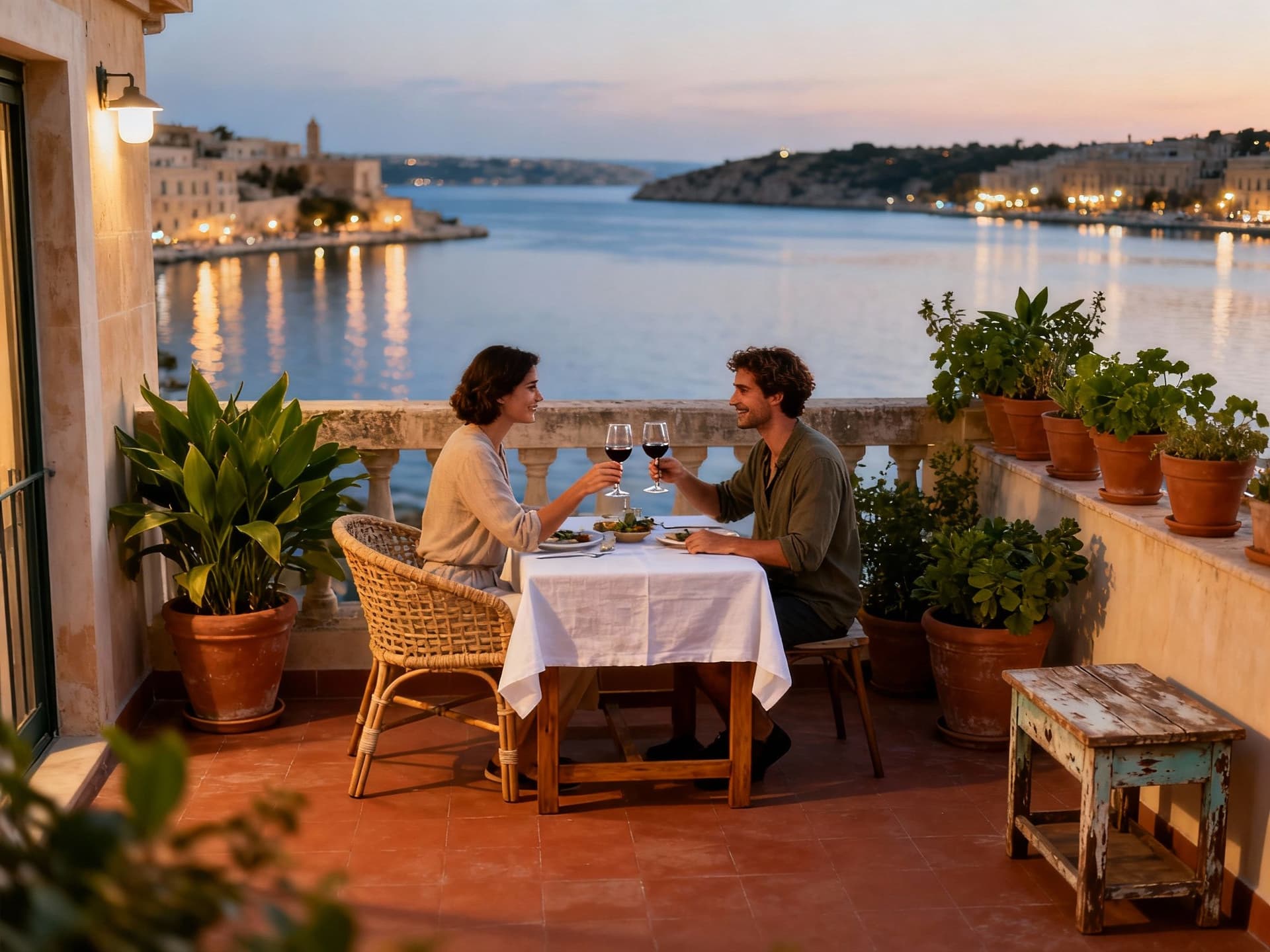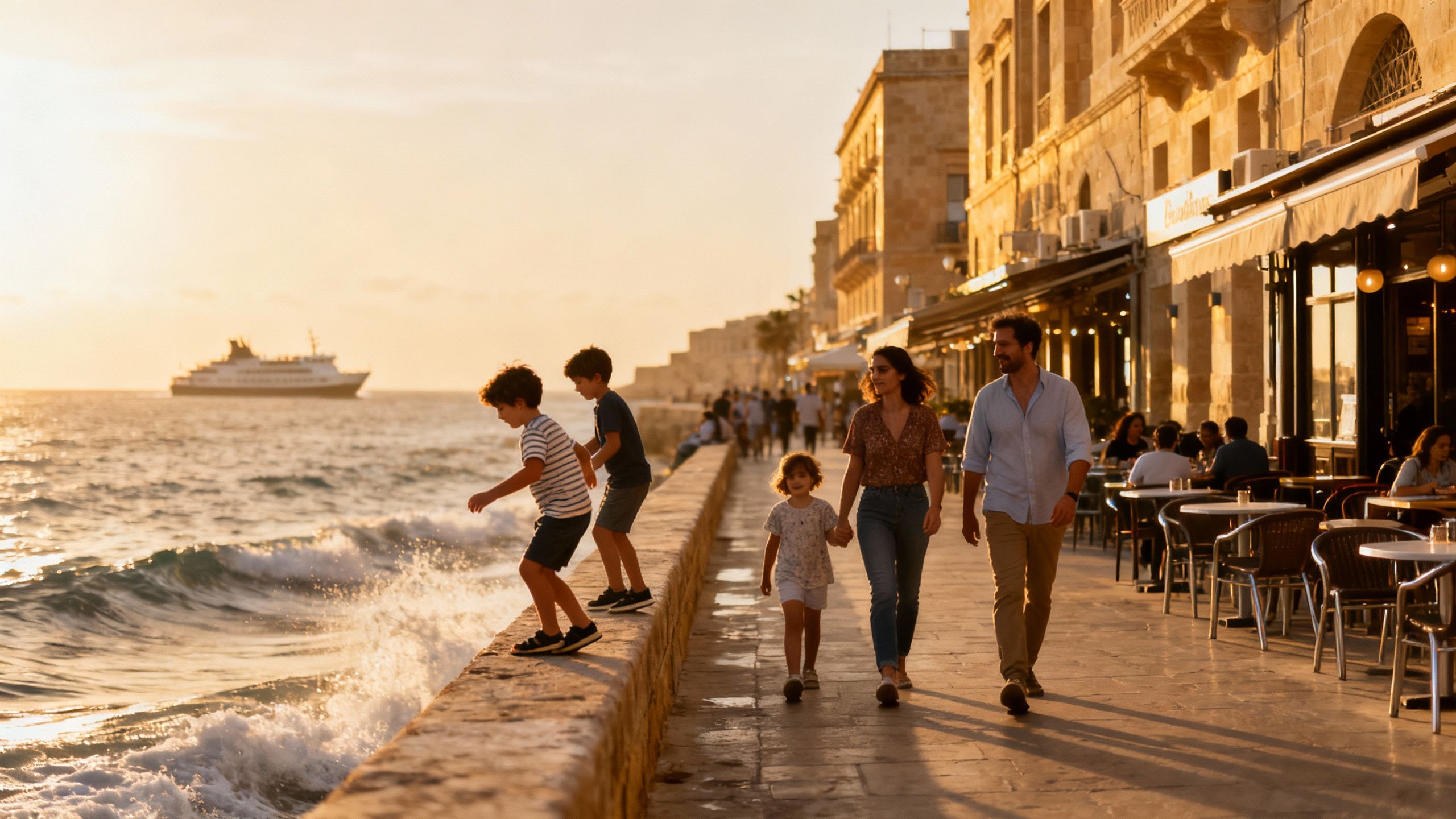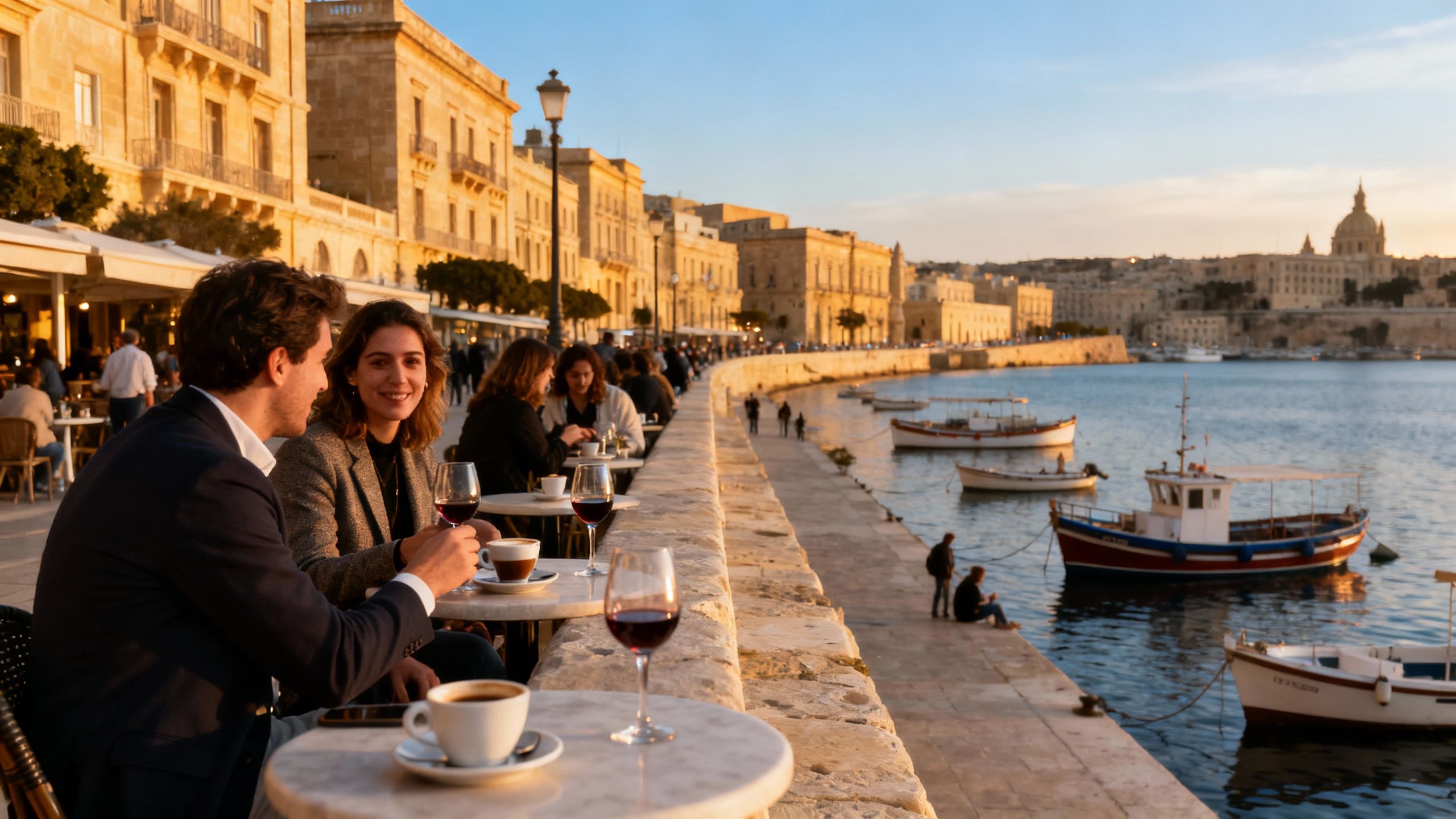Where Malta’s Value Hides: Contrarian Areas to Consider
Malta’s compact rhythms — from Valletta palazzos to Sliema promenades — reward buyers who prioritise lifestyle and local expertise; RPPI data shows prices rising ~5–6% yearly.
Imagine the late-afternoon light on Valletta’s limestone facades, café tables clustered beside baroque churches and a ferry carving a white line across Marsamxett Harbour. Malta is compact enough that a morning coffee in Sliema can be followed by an afternoon on a secluded Gozo cove; it is also a market where subtle differences of street, aspect and season change both the daily life and the long-term value of a property.
Living the Malta lifestyle: small island, many rhythms

Daily life in Malta reads like a sequence of short chapters: a bakery queue on Triq l-Isqof in Valletta, a swim at Ġnejna at dusk, aperitifs by Spinola Bay. English is widely spoken and cafés double as informal town halls; expat and local communities mix easily at farmers’ markets and neighbourhood festas. Weather shapes routine: winters are mild and social, summers open onto an outdoors-driven tempo where terraces and balconies become essential rooms.
Neighborhood spotlight — Valletta, Sliema and St Julian’s
Valletta rewards a buyer who values architectural pedigree: narrow streets, grand townhouses, and restored palazzini with original stonework and engraved lintels. Sliema offers a promenade life, cafés and modern apartments with sea views; it is convenient and sociable. St Julian’s — Spinola Bay and Balluta — is versatile: a morning of quiet bayside walks changes into a lively dining scene after sunset. Each area presents a different rhythm of living and a different purchase calculus.
Food, markets and the slow calendar of local life
Food anchors life in Malta: street bakeries, rabbit stews in family-run trattorias, and fish brought ashore at Marsaxlokk Market on Sundays. Seasonal festivals reframe neighbourhoods — festa banners, brass bands and communal dinners alter the social geography for days at a time. These rituals matter when you buy: proximity to the market or to a favoured trattoria often defines what you will actually use in everyday life.
- Lifestyle highlights and local places worth knowing
• Morning espresso at Caffè Cordina in Valletta; an architectural moment with marble flooring and genteel service • Sunset swim at Golden Bay or the less frequented Għajn Tuffieħa for quieter afternoons • Sunday stalls at Marsaxlokk Market for fish and ceramics • Weeknight promenades along Sliema’s seafront to watch fishing boats and yachts • An evening in Mdina’s silent streets for classical illumination and a different pace
Making the move: matching property type to the life you want

The island’s compactness concentrates demand; official indices show steady price rises (the RPPI rose by about 5.2% in Q4 2024 and continued to climb in 2025). That shapes choice: a maisonette in an older quarter will offer different light and outdoor space than a new apartment tower in Sliema. Buying for everyday life means assessing how a specific property will feel on a Tuesday morning, not only how it photographs on a summer afternoon.
Property styles and what they give you
Maltese maisonettes, with street-level access and internal courtyards, give a private sense of garden living even in dense streets. Penthouses offer roof terraces and light but trade off higher maintenance and seasonal rental demand. Restored palazzos in Valletta provide historic detail and generous proportions, while contemporary apartments in seafront towns prioritise convenience and views. Consider sunlight, cross-ventilation, and how the layout supports indoor–outdoor life.
- How local experts make the lifestyle real (a practical checklist)
1. Have an agent confirm which streets retain original stonework and which have seen insensitive rooftop extensions. 2. Ask an architect or surveyor for ventilation and damp reports — Malta’s humidity and salt air affect materials differently. 3. Check orientation for summer shading and winter light; terraces facing west capture evening life. 4. Request a local neighbourhood audit: traffic at school drop‑off times, festa frequency, and access to small groceries and pharmacies. 5. For seafront homes, verify maintenance regimes for salt corrosion and communal building repairs.
Insider knowledge: what expats wish they’d known
Expats often arrive enchanted by the light and then discover practicalities that determine long-term satisfaction: delivery logistics on narrow streets, the rhythm of festa season, and the cost of authentic restoration. The real surprise for many is how quickly community membership forms — a favourite barber, the café owner who remembers your order — and how those small relationships shape where you prefer to live.
Cultural integration and neighbourhood etiquette
Maltese social life values reciprocity: a willingness to participate in local rhythms — shopping at the market, attending a festa, or patronising a local business — accelerates acceptance. English use eases practicalities but learning a few Maltese phrases and understanding festa etiquette helps. Neighbourhood norms also influence renovation choices; overly conspicuous façades or insensitive conversions can raise local resistance and complicate permissions.
- Long-term lifestyle considerations
• Consider how seasonal tourism alters quiet lanes in July and August. • Factor in community services: proximity to a health centre, primary schools in Ħamrun or Pembroke, and courier access. • Assess whether a property supports phased restoration rather than a single costly overhaul. • Decide if you want an area with an active international community (Sliema/St Julian’s) or quieter village life (Marsaxlokk, Gozo).
When the dream and the ledger meet: Malta’s recent price trajectory (where evidence matters). Malta’s RPPI rose by roughly 5–6% year‑on‑year in recent quarters, underscoring steady demand across apartment and maisonette segments; buyers should set expectations accordingly and account for maintenance, conservation and seasonal rental dynamics when modelling long-term returns. Local agencies that combine architectural sensitivity with market data will be most useful in reconciling lifestyle aims with investment prudence.
Practical next steps for a lifestyle-led purchase
1. Visit in two different seasons: the island’s character — crowds, light, and local life — shifts between winter and summer. 2. Commission a measured survey and local conservation report before offer. 3. Work with an agent who documents comparable trades by street rather than by town. 4. Budget for restoration and regular marine‑air maintenance; ask vendors for recent works and receipts. 5. Plan for neighbourhood integration: meet neighbours, attend a festa and sample weekly market rhythms.
Conclusion — Malta as stewardship: a life and a responsibility. Buying here is more than acquiring a pied‑à‑terre; it is entering a culture of close community, layered history and a climate that rewards considered materials and quiet maintenance. If you want the light of Valletta’s salons, the seafront ease of Sliema, or a slow village pace in Gozo, plan your purchase around the life you intend to lead. A local agency versed in architecture, seasonal rhythms and neighbourhood nuance will be the single most valuable partner in turning that envisioned life into a home.
Norwegian with years in Florence guiding clients across borders. I bridge Oslo and Tuscany, focusing on legal navigation, cultural context, and enduring craftsmanship.


